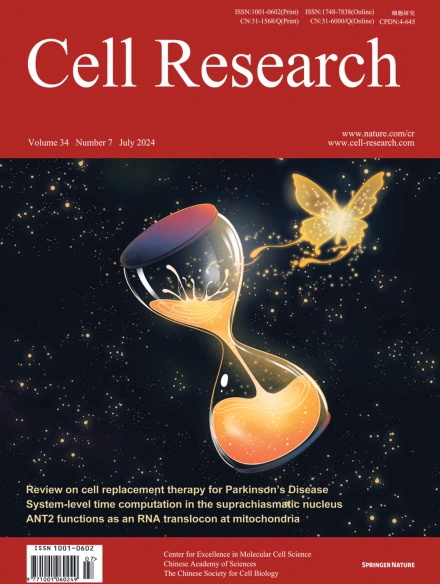
Advanced Search
Submit Manuscript
Advanced Search
Submit Manuscript
Volume 34, No 7, Jul 2024
ISSN: 1001-0602
EISSN: 1748-7838 2018
impact factor 17.848*
(Clarivate Analytics, 2019)
Volume 34 Issue 7, July 2024: 479-492 |
Past, present, and future of cell replacement therapy for parkinson’s disease: a novel emphasis on host immune responses
Tae-Yoon Park1,2 , Jeha Jeon1,2 , Young Cha1,2 , Kwang-Soo Kim1,2,3,4,*
1Molecular Neurobiology Laboratory, Department of Psychiatry and McLean Hospital, Harvard Medical School, Belmont, MA, USAParkinson’s disease (PD) stands as the second most common neurodegenerative disorder after Alzheimer’s disease, and its prevalence continues to rise with the aging global population. Central to the pathophysiology of PD is the specific degeneration of midbrain dopamine neurons (mDANs) in the substantia nigra. Consequently, cell replacement therapy (CRT) has emerged as a promising treatment approach, initially supported by various open-label clinical studies employing fetal ventral mesencephalic (fVM) cells. Despite the initial favorable results, fVM cell therapy has intrinsic and logistical limitations that hinder its transition to a standard treatment for PD. Recent efforts in the field of cell therapy have shifted its focus towards the utilization of human pluripotent stem cells, including human embryonic stem cells and induced pluripotent stem cells, to surmount existing challenges. However, regardless of the transplantable cell sources (e.g., xenogeneic, allogeneic, or autologous), the poor and variable survival of implanted dopamine cells remains a major obstacle. Emerging evidence highlights the pivotal role of host immune responses following transplantation in influencing the survival of implanted mDANs, underscoring an important area for further research. In this comprehensive review, building upon insights derived from previous fVM transplantation studies, we delve into the functional ramifications of host immune responses on the survival and efficacy of grafted dopamine cells. Furthermore, we explore potential strategic approaches to modulate the host immune response, ultimately aiming for optimal outcomes in future clinical applications of CRT for PD.
https://doi.org/10.1038/s41422-024-00971-y